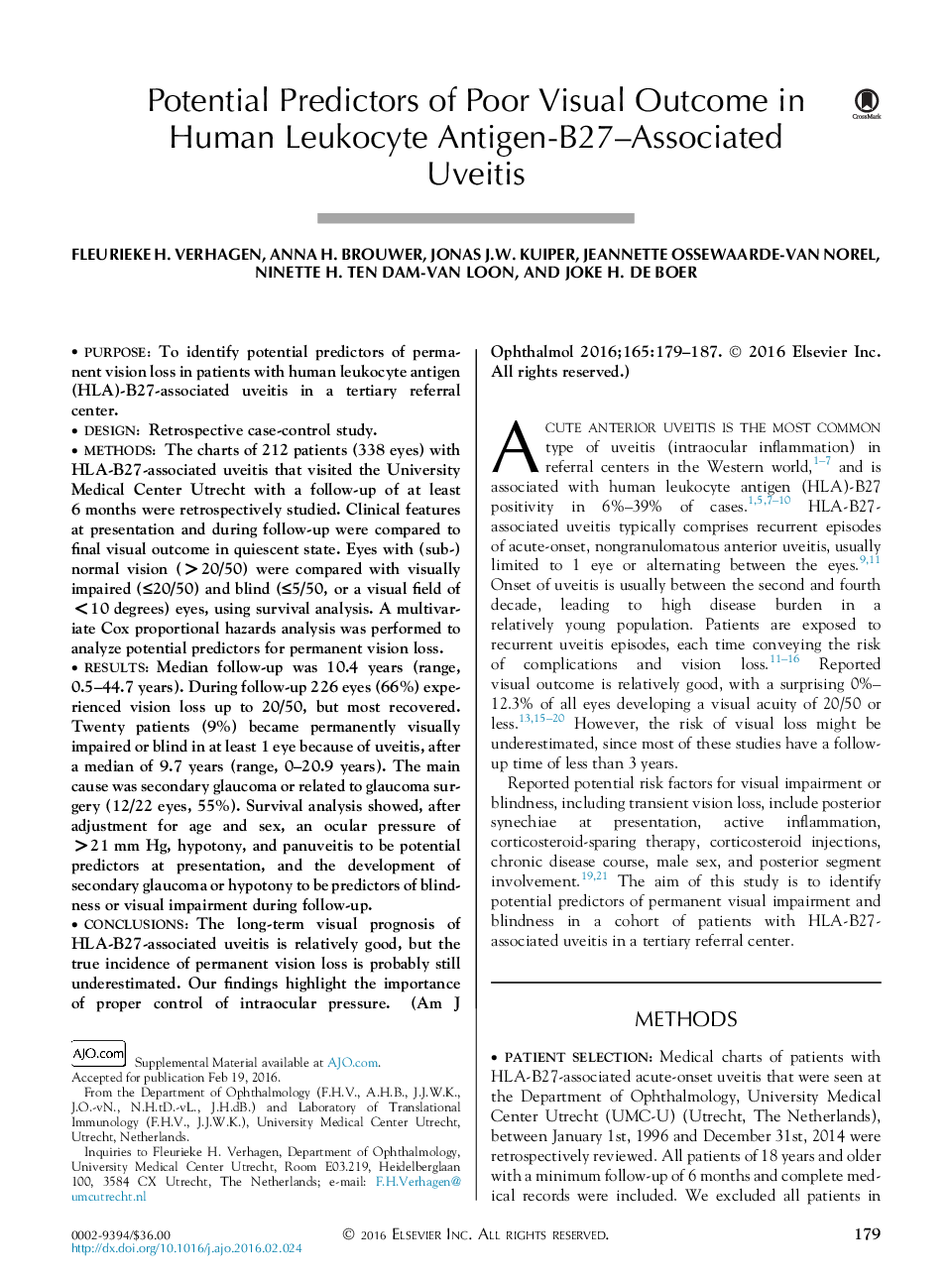| Article ID | Journal | Published Year | Pages | File Type |
|---|---|---|---|---|
| 6194966 | American Journal of Ophthalmology | 2016 | 9 Pages |
PurposeTo identify potential predictors of permanent vision loss in patients with human leukocyte antigen (HLA)-B27-associated uveitis in a tertiary referral center.DesignRetrospective case-control study.MethodsThe charts of 212 patients (338 eyes) with HLA-B27-associated uveitis that visited the University Medical Center Utrecht with a follow-up of at least 6 months were retrospectively studied. Clinical features at presentation and during follow-up were compared to final visual outcome in quiescent state. Eyes with (sub-) normal vision (>20/50) were compared with visually impaired (â¤20/50) and blind (â¤5/50, or a visual field of <10 degrees) eyes, using survival analysis. A multivariate Cox proportional hazards analysis was performed to analyze potential predictors for permanent vision loss.ResultsMedian follow-up was 10.4 years (range, 0.5-44.7 years). During follow-up 226 eyes (66%) experienced vision loss up to 20/50, but most recovered. Twenty patients (9%) became permanently visually impaired or blind in at least 1 eye because of uveitis, after a median of 9.7 years (range, 0-20.9 years). The main cause was secondary glaucoma or related to glaucoma surgery (12/22 eyes, 55%). Survival analysis showed, after adjustment for age and sex, an ocular pressure of >21 mm Hg, hypotony, and panuveitis to be potential predictors at presentation, and the development of secondary glaucoma or hypotony to be predictors of blindness or visual impairment during follow-up.ConclusionsThe long-term visual prognosis of HLA-B27-associated uveitis is relatively good, but the true incidence of permanent vision loss is probably still underestimated. Our findings highlight the importance of proper control of intraocular pressure.
